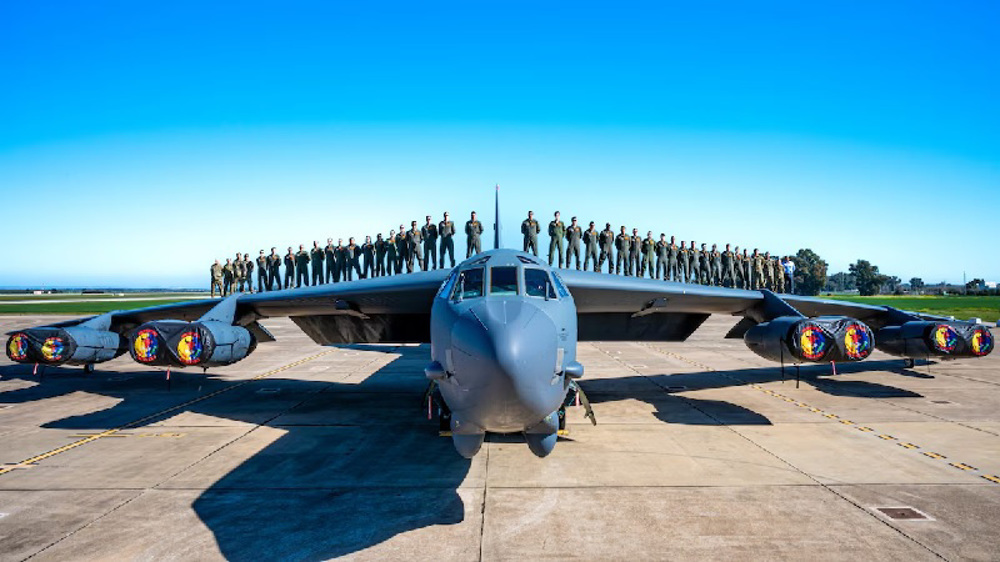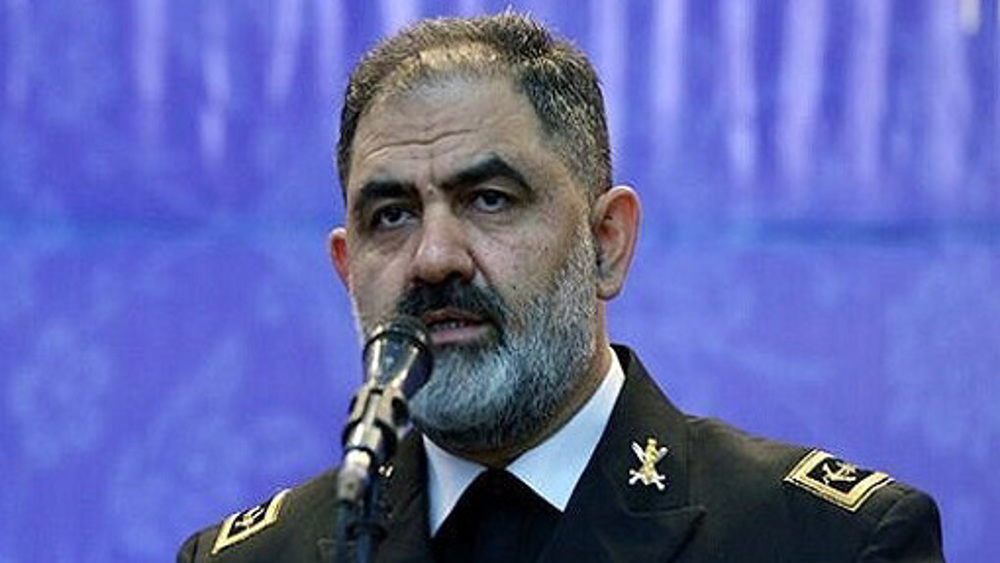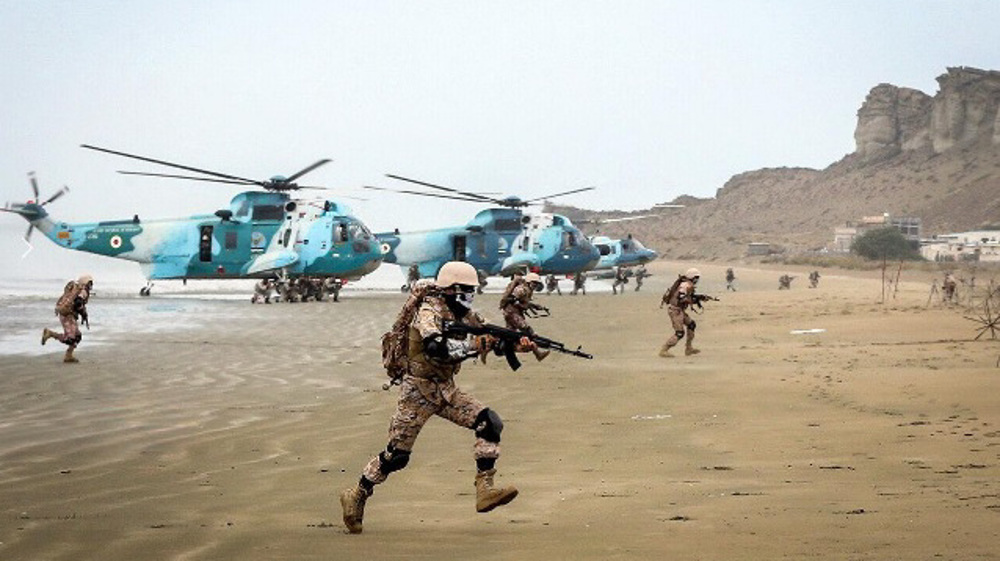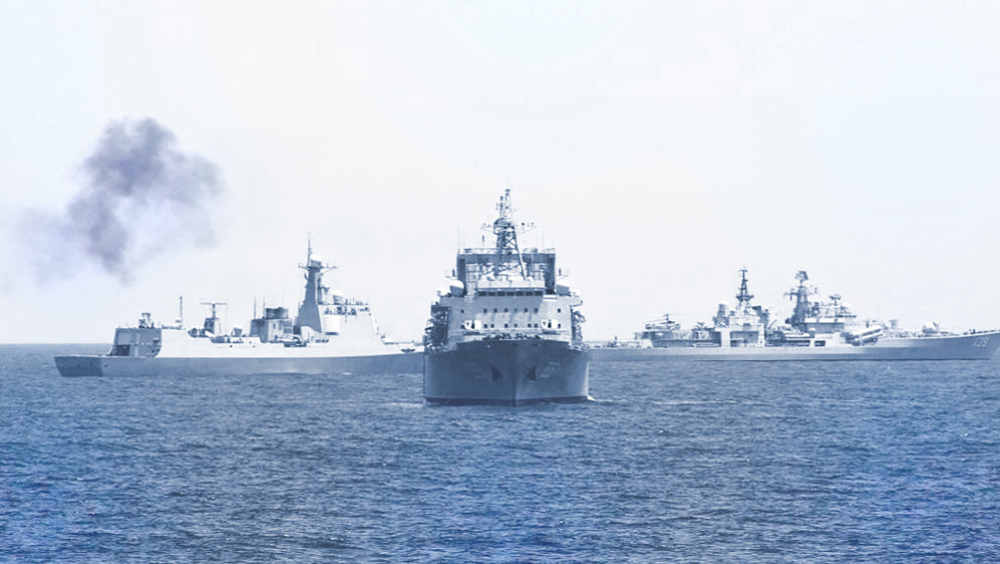Iran, Russia, China to hold joint marine security exercise in north of Indian Ocean
Iran, Russia and China are set to hold a joint naval drill in the Indian Ocean as part of a plan to expand military cooperation and boost maritime security in the Indo-Pacific region.
Iran's official news agency, IRNA, citing the Army's Public Relations Office, reported on Thursday that the joint drill, codenamed the '2022 Marine Security Belt', is scheduled to be held in the north of the Indian Ocean on Friday with the participation of marine and airborne units of the Iranian, Chinese and Russian navies.
“In addition to the marine and airborne units of the Iranian Navy and the Islamic Revolution Guards Corps (IRGC)'s naval force, Chinese and Russian naval vessels will also participate in the exercise,” said Rear Admiral Mostafa Tajoddini, spokesman for the naval drill.
Stressing that the Friday drill is the third of its kind between Iran, Russia and China, the likes of which will continue in the future, Tajoddini said the 2022 Maritime Security Belt exercise, whose main motto is "Together for Peace and Security," will be held over an area of 17,000 square kilometers.
“The goal of this exercise is to strengthen regional security and further develop multilateral cooperation among the three countries while showing," the military commander said, adding that a show of goodwill and ability of the three countries to jointly support the world peace and maritime security is another goal of the drill.
Tajoddini added that other goals of the exercise are to strengthen the security of international maritime trade, combat piracy and maritime terrorism, exchange information in the field of maritime rescue, and exchange of operational and tactical experiences.
Late in December 2019, Iran, Russia and China staged the first ‘Marine Security Belt’ exercise, a four-day joint maritime drill in the Indian Ocean and the Sea of Oman area.
The drills covered 17,000 square kilometers and consisted of various tactical exercises such as target practicing and rescuing ships from assault and incidents such as fires.
The Sea of Oman is a particularly sensitive waterway as it connects to the Strait of Hormuz, through which about a fifth of the world’s oil passes and which in turn connects to the Persian Gulf.

US B-52 bombers in West Asia do not scare Iran

Navy commander: Five operational, training flotillas deployed to intl. waters

Iran Army launches large-scale drills along southern shores
VIDEO | Lebanese resistance remains alive
Iran’s daily sweet gas production peaks at 870 mcm: NIGC
Nasrallah shattered myth of Israeli military’s invincibility: Top Yemeni official
Iran says it has attracted $8.2bn of foreign investment since Aug
‘Misguided policies’: Araghchi says unjust sanctions inflict suffering on innocent Iranians
Iran summons Polish envoy over 'baseless, biased' drone claims
Election winner conservative Merz invites Netanyahu to Germany despite ICC warrant
7,000+ killed in eastern DR Congo since January: PM







 This makes it easy to access the Press TV website
This makes it easy to access the Press TV website